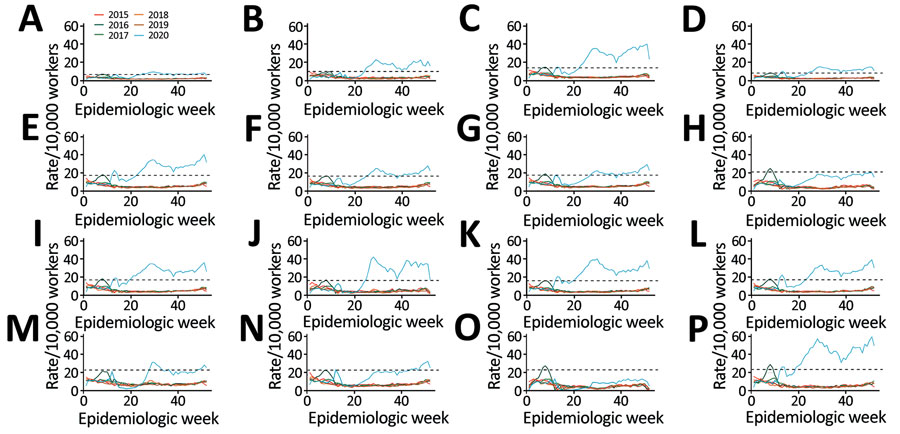Volume 28, Number 1—January 2022
Dispatch
Use of Private Sector Workforce Respiratory Disease Short-Term Disability Claims to Assess SARS-CoV-2, Mexico, 2020
Figure 2

Figure 2. Annual incidence rate of work absenteeism related to respiratory diseases short-term disability claims per 10,000 workers for workers in selected industry sectors (A‒H) and subsectors (I‒P) insured by the Mexican Social Security Institute, by epidemiologic week, Mexico, 2015–2020. Smoothed series was determined by using locally weighted scatterplot smoothing. Black dashed lines indicate epidemic thresholds, estimated by using the moving epidemic method and observed values for 2015‒2019. A) Agriculture, forestry, fishing and hunting; B) mining, quarrying, and oil and gas extraction; C) manufacturing; D) food manufacturing; E) transportation equipment; F) construction; G) retail trade; H) food and beverage stores; I) self-service and retail stores; J) communications and transportation; K) services for companies, homes and people; L) accommodation; M) food services and drinking places; N) social and community services; O) educational services, arts, entertainment, and recreation; P) health care and social assistance.